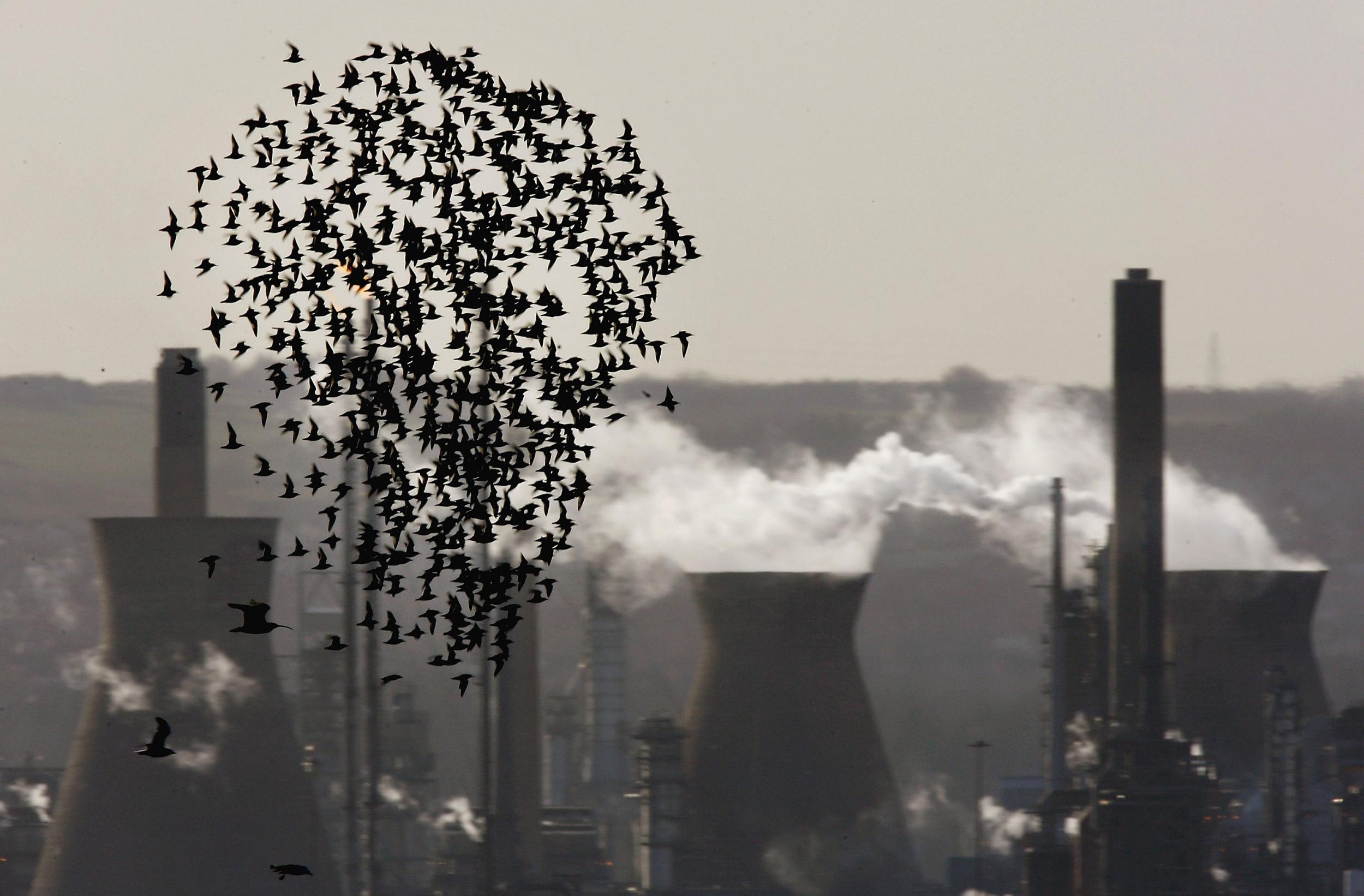Global warming causing birds to shrink, scientists say
Analysis of 70,000 specimens reveals startling effect on biodiversity

Birds are getting smaller, according to an analysis of migratory birds that died after colliding into buildings in Chicago and were collected as specimens for the Field Museum of Natural History.
David Willard, a Field Museum ornithologist, has measured the Windy City’s dead birds since 1978. Data from his calipers and scales reveal decades-long trends in bird bodies: Their legs, on average, are growing shorter. They have lost weight. Their wings are getting slightly longer.
These changes are present in nearly all of the species he measured, according to a study of 70,716 bird specimens from almost 40 years published in the journal Ecology Letters.
Morphing birds, Mr Willard and his colleagues say, reflect a changing climate.
“Warming temperatures seem to be having a pretty consistent and almost universal effect on a large number of different species, regardless of other aspects of their biology,” said study author Benjamin Winger, who studies the evolution and ecology of birds at the University of Michigan.
The basis for the study began after an acquaintance mentioned to Mr Willard birds often dashed into a glassy convention centre, McCormick Place, near the museum. (The convention centre, the biggest in North America, reduced its nighttime lights about 20 years ago; as a result, bird deaths there have dropped by about three-quarters, Mr Willard said. McCormick Place also recently installed a bird habitat over one of its underground parking garages.)
Climate change was not on his mind, Mr Willard said, when he started gathering the birds to add to the museum’s collection. He measured their beaks, legs, mass and wings – standard ornithological dimensions – because he was curious about seasonal trends.
As the years passed, Mr Willard was joined by other museum staff and a volunteer organisation, Chicago Bird Collision Monitors, which also collects birds harmed by windows. The volunteers rehabilitate injured birds and only donate the departed ones to the museum.
By 2016, Mr Willard had recorded the measurements of more than 70,000 birds, representing 52 species, in his ledgers.
Simon Griffith, an ecologist at Macquarie University in Australia who was not a member of the research team, said it was “just amazing” that a single scientist measured such an extensive collection.
“It reduces the noise in the data-set,” which he said was more standardised in methodology and geology than previous studies that suggest climate change influences bird size.
Fifteen species of common birds, including swamp sparrows and dark-eyed juncos, made up the majority of the specimens. But elusive birds ended up in Mr Willard’s ledgers of measurements, too, like a single yellow rail, a rarely seen marsh bird. Mr Willard said he identified Illinois’ first Brewer’s sparrow, a tiny bird that usually keeps to the western US.

From 1978 to 2016, birds on average lost 2.6 per cent of their mass and their legs shortened by 2.4 per cent. Their wings, meanwhile, lengthened by 1.3 per cent.
“The changes that are being documented are not something you could see with your eye,” Mr Willard said. But that they appear in such a large sample, and one involving diverse bird species, indicates the trends are real and widespread, he said.
Mr Winger said it was unclear whether small reductions harm the birds. “We don’t really know what the biological significance is, of this difference,” he said.
But this observation was potentially concerning to Mr Griffith, who compared this with other broad-scale patterns in birds, like the recent study reporting the 29 per cent decline in North American bird populations since 1970.
The study authors examined precipitation, vegetation and other factors that could contribute to bird size. They determined an increase in summer temperatures is the strongest predictor for smaller birds.
“In years when temperatures were a bit warmer, the bodies got smaller. In years when temperatures were a bit cooler, we saw an increase in body size, even though the long-term trend was to decline,” Mr Winger said. “So that leads us to believe that temperature is pretty important here.”
Smaller animals have larger surface-area-to-volume ratios, and this allows them to lose body heat more quickly. Mr Winger proposes that hotter temperatures could apply pressure on birds to become smaller to stay cooler.
Mr Griffith offered another possibility: His research, studying zebra finches and house sparrows in laboratories and in the wild, shows hot temperatures during the breeding season reduce the size of bird offspring. When young birds are stressed by the heat, they don’t grow large, he said.
The lengthening wings were unexpected, the scientists said. Flight requires the most energy of all the ways back-boned creatures move. The study authors hypothesise the wingspan changes could help the birds eke out an energetic edge. “Birds with longer and more pointed wings,” Mr Winger said, “might be more efficient fliers.”
Mr Willard, now retired, said he plans to continue measuring birds for as long as he can. On Tuesday, in the museum’s storage, 1,000 birds awaited his rulers. “When I’m done talking to you,” he said, “I’m going to do a few more.”
The Washington Post
Join our commenting forum
Join thought-provoking conversations, follow other Independent readers and see their replies
Comments
Bookmark popover
Removed from bookmarks